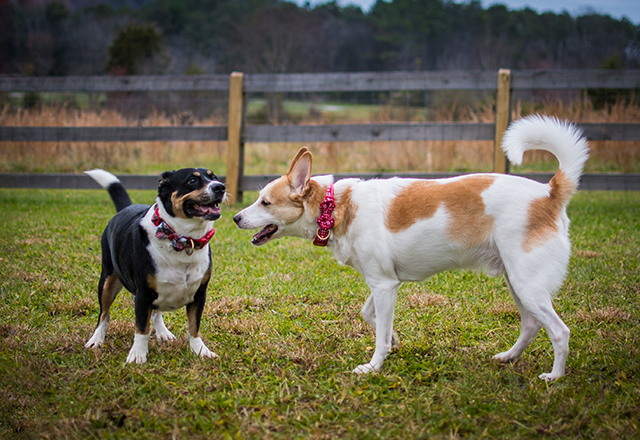A crucial part of animals’ social interactions requires individuals to recognize members of their own species. Most mammals identify one another using a combination of visual, olfactory and auditory cues. However, previous studies have shown that in the absence of some sensory inputs, most species can identify one another using only sight. However, most of these studies had been done in wild populations, where most individuals are relatively similar morphologically. After decades of breeding, domesticated dogs represent the most phenotypically diverse species of mammal on Earth. Given this, the question of whether dogs can recognize each other based on sight alone was a complete unknown.
To begin to answer this question, researchers at the Université de Lyon in France recruited nine willing subjects: pet dogs belonging to university veterinary students. The experimental design was quite simple — the dogs would undergo a series of trainings to help them learn to identify dogs on a screen, and then researchers would do their best to confuse them by adding in non-dog pictures. The dog pictures represented many diverse breeds, different sexes, and both pure- and cross-breeds. The non-dog pictures included numerous different mammals such as rabbits, cows, cats and humans. Importantly, researchers minimized potential bias by ensuring that no dog encountered the same image twice throughout the study, and that no cues were given by researchers as to which screen to choose. After initial reward-based training, dogs were able to successfully identify a dog versus a plain screen. Then, researchers determined if dogs could identify a dog versus a cow, then a dog versus a set of non-dogs. Finally, researchers further challenged their subjects with longer sessions: 12 dogs versus 12 non-dogs, again with no repeating images and a wide variety of mammals in the non-dog category.
In all, the researchers found that the test subjects could successfully differentiate dogs versus non-dogs in two dimensions using only visual cues with very consistent accuracy. Moreover, this study was able to show that dogs can identify other dogs from different viewpoints (front, profile, etc.). Given this, researchers concluded that dogs must be able to recognize a “dog pattern,” suggesting that invariants in dog morphology must exist that allow dogs to quickly and accurately identify each other despite species diversity.
Even with overall accuracy in dog/dog identification, the authors found a large amount of variation among the dogs’ success rates, which they attributed to differences in personality. Firstly, they noticed that errors seemed to come in bouts, suggesting that dogs become frustrated. Those that were less able to deal with frustration would have an unsuccessful session, whereas dogs that could adapt often were able to be more successful. Importantly, this idea of “perseverance” was an innate trait in some of the subjects that allowed them to be more successful. The “top dogs” often applied the right rule after trial and error, and then stuck to it, whereas less successful dogs would stubbornly go to their preferred screen and experience more frustration, which led to increased errors.
Further highlighting the role that innate personality played in these experiments, the authors note that one subject, Bounty, had a significantly more difficult time with the tasks then the other dogs. Bounty needed increasing numbers of training sessions to identify dogs. Whereas the average amount of sessions for the other participants was around 12, Bounty needed 56. They noted that it may be because Bounty is so obedient that she had difficulty adapting once the stimulus-reward contingency is reversed.
Given the findings of this project, researchers suggest that new studies should focus on determining what salient features of dog faces (i.e., eyes, ears, nose) are necessary to form the “dog pattern.” The researchers also suggest that dog identification might even be at a higher level, such as a conceptual one. The fact that dogs can recognize one another visually is reassuring, and it suggests that, although humans have stretched domesticated dogs to their morphological limits, their biological essence is well-preserved.
Read the original research article: link.springer.com/article/10.1007%2Fs10071-013-0600-8
Related content
- Helping Dogs Live Their Best Lives Through Training
- The Vets Among Us
- Graduate School Is the Cat’s Meow
Want to read more from the Johns Hopkins School of Medicine? Subscribe to the Biomedical Odyssey blog and receive new posts directly in your inbox.

Pingback: From the Trees to the Ground: What Gorilla Feet Can Teach Us About Evolution | Biomedical Odyssey
Comments are closed.